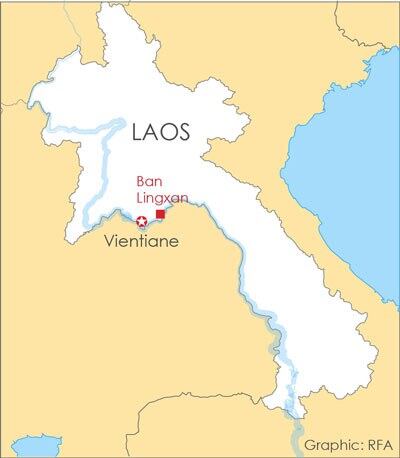After mulling for a year, Laos has rejected a bid by a company from China to build a rare earth minerals plant in the Southeast Asian state, citing the company’s refusal to disclose the source of its minerals and potential adverse environmental impact, according to a government official.
The mining official, speaking on condition of anonymity, said that rare earth minerals could present a risk to the local environment and that without knowing where they came from and which materials are being used, the government could not approve the proposal.
“The rare earth minerals are from foreign countries, but [the company] has not disclosed from which ones. They want to build a production plant, but we won’t allow it because there are too many polluted elements in rare earth minerals,” the official said.
“We have asked for information about the leads, sediments, and chemical toxins they will use, but they would not provide it to us, so we will not authorize it yet.”
The Chinese company, Laos Wonder New Materials Import-Export Co. Ltd., had submitted an application to the Lao government nearly one year ago to build the production plant in Thourakhom district’s Ban Lingxan, located about 50 kilometers (31 miles) from the capital Vientiane.
It is believed that the company plans to produce rare earth oxide. Processed rare earth minerals are used in products such as electronics, fluorescent lamps, magnets, and batteries.
The official said that an environmental impact study had been conducted in the area of the proposed site and found potential risks of pollution to the environment.

He said that in addition to the Chinese company’s failure to provide information on the source of its rare earth minerals, company management was unable to provide details about the potential impact of the mineral production process and had no plan for mitigating damage to the local ecology.
Harmful chemicals—usually toxic acids—used in the company’s production process would also be imported along with raw materials from the third country source, the official said.
Another common hazard associated with the production process is mildly radioactive slurry tailings resulting from the common occurrence of thorium and uranium in rare earth element ores.
With no plan in place to deal with the waste from the plant, he said, the nearby Nam Gnum River is at risk of pollution, along with the riparian communities that make their livelihood from it.
The project has never been disclosed to the public.
There has also been concern over building a rare earth refinery in Laos' Southeast Asian neighbor Malaysia.
Malaysia had granted an Australian miner a two-year license to operate the first rare earths plant outside China in years but the government is reviewing its decision amid protests over alleged health and environmental risks.
Global production
China now produces over 95 percent of the world's rare earth supply, mostly in Inner Mongolia, even though it has only 37 percent of proven reserves.
New demand has recently strained supply, and there is growing concern that the world may soon face a shortage of the rare earths.
In 2009, China announced that it would reduce its export of rare earth materials to 35,000 tons per year in 2010-2015, citing resource depletion and environmental concerns.
However, some critics have said that China’s decision was motivated by an interest in moving up the supply chain to sell valuable finished goods, rather than inexpensive raw materials.
China has a rapidly growing investment presence in resource-starved Laos, which suffers from high rates of poverty and a lack of viable infrastructure.
Chinese firms operate concessions which include casinos in Luang Namtha province, on the border of China’s Yunnan province, and in northwestern Bokeo province on the border with Burma.
Reported by Waroonsiri Sungsuwan for RFA’s Lao service. Translated by Somnet Inthapannha. Written in English by Joshua Lipes.
